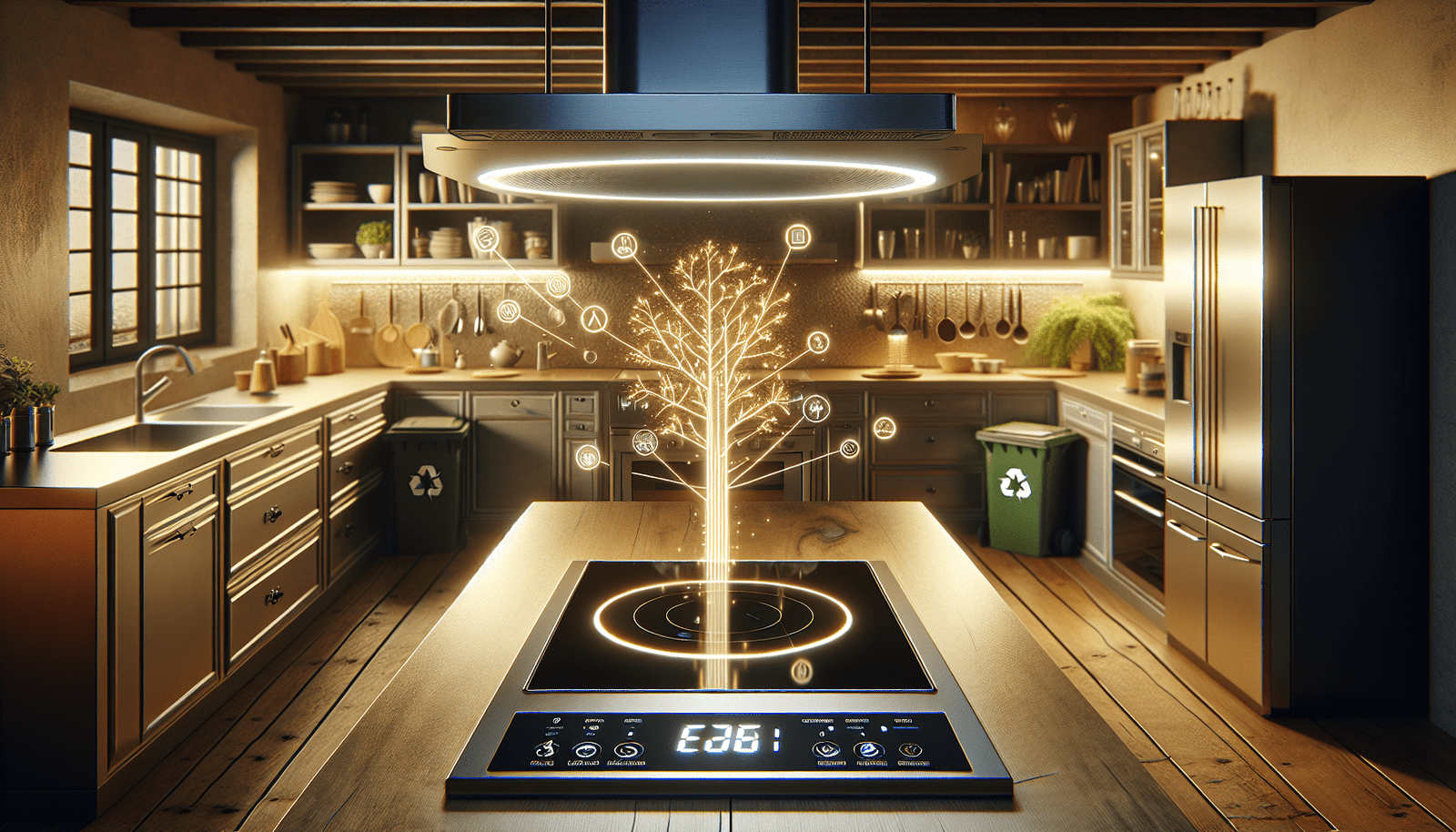Have you ever wondered how you can transform your kitchen into a modern, energy-efficient space? In this article, we will explore the essentials of creating a kitchen that not only looks stylish but also helps you save on energy costs. From appliances to lighting to smart technology, we will cover everything you need to know to make your kitchen more eco-friendly and sustainable. Let’s get started!
Choosing Energy-Efficient Appliances
When it comes to creating a modern, energy-efficient kitchen, choosing the right appliances is crucial. Look for appliances that are ENERGY STAR certified, which means they meet strict energy efficiency guidelines set by the Environmental Protection Agency. These appliances use less energy, saving you money on your utility bills while also reducing your carbon footprint. From refrigerators to dishwashers to ovens, there are ENERGY STAR certified options available for all your kitchen needs.
Refrigerator
Investing in an energy-efficient refrigerator can have a significant impact on your kitchen’s overall energy consumption. Look for refrigerators with features like adjustable temperature controls, energy-saving modes, and high insulation levels to ensure maximum efficiency. Additionally, consider the size of the refrigerator – larger units tend to consume more energy, so choose a size that fits your needs without being excessive.
Dishwasher
When shopping for a dishwasher, opt for models that have water-saving features and energy-efficient cycles. Look for dishwashers with a high Energy Factor (EF) rating, which indicates the appliance’s overall efficiency in using energy. Additionally, consider using the dishwasher’s eco-friendly cycle whenever possible to further reduce energy usage.
Oven
Whether you prefer a traditional oven or a convection oven, there are energy-efficient options available for both. Look for ovens with features like a self-cleaning function, efficient heat distribution, and programmable settings to maximize energy savings. Additionally, choose appliances with the appropriate size for your cooking needs to avoid unnecessary energy consumption.
Energy-Efficient Lighting
Lighting plays a significant role in the overall energy consumption of your kitchen. By choosing energy-efficient lighting options, you can reduce electricity usage and create a more sustainable space. Consider the following lighting options to make your kitchen more energy-efficient:
LED Bulbs
LED bulbs are highly energy-efficient and long-lasting, making them an excellent choice for kitchen lighting. LED bulbs use up to 80% less energy than traditional incandescent bulbs and can last up to 25 times longer. They also come in a variety of colors and brightness levels, allowing you to create the perfect ambiance in your kitchen.
Under-Cabinet Lighting
Installing under-cabinet lighting not only adds style to your kitchen but also improves energy efficiency. LED strip lights are a popular choice for under-cabinet lighting, as they provide ample task lighting while consuming minimal energy. Consider installing motion sensor switches to further reduce unnecessary energy usage.
Natural Light
Maximizing natural light in your kitchen can significantly reduce the need for artificial lighting during the day. Consider installing skylights, larger windows, or a glass door to bring in more natural light. Additionally, choose light-colored finishes for walls and cabinets to reflect light and brighten up the space.

Smart Technology Integration
Integrating smart technology into your kitchen can help you monitor and control energy usage more efficiently. From smart thermostats to energy monitoring systems, there are various ways to make your kitchen smarter and more energy-efficient. Consider the following smart technology options for your modern kitchen:
Smart Appliances
Many modern appliances come with smart technology features that allow you to monitor and control energy usage remotely. From refrigerators with built-in cameras to ovens with voice control capabilities, smart appliances can help you save energy and streamline kitchen tasks. Look for appliances with Energy Management Systems (EMS) that optimize energy consumption based on your usage patterns.
Smart Lighting
Smart lighting systems enable you to adjust brightness levels, set schedules, and control lighting from your smartphone or voice commands. Consider installing smart light bulbs or switches that allow you to customize lighting settings for different activities, such as cooking, dining, or entertaining. Additionally, look for lighting systems that have motion sensors to automatically turn off lights when not in use.
Energy Monitoring Devices
Energy monitoring devices provide real-time data on your kitchen’s energy consumption, allowing you to identify areas where you can save energy. These devices track energy usage by individual appliances and provide insights on how to optimize energy efficiency. Consider installing a smart energy monitor to gain a better understanding of your kitchen’s energy consumption habits.
Proper Insulation and Ventilation
Proper insulation and ventilation are essential components of an energy-efficient kitchen. By ensuring that your kitchen is well-insulated and properly ventilated, you can minimize energy loss and maintain a comfortable indoor environment. Consider the following tips for improving insulation and ventilation in your kitchen:
Insulation
Proper insulation helps regulate indoor temperatures, reducing the need for heating and cooling systems to work harder. Insulate walls, windows, and doors to prevent heat loss during colder months and keep cool air inside during warmer months. Consider using energy-efficient materials like cellulose, fiberglass, or foam insulation for maximum effectiveness.
Ventilation
Adequate ventilation is crucial for removing cooking odors, excess moisture, and indoor pollutants from your kitchen. Install a range hood or vent fan above your stove to extract cooking fumes and prevent indoor air pollution. Additionally, consider using natural ventilation methods, such as opening windows or doors, to promote airflow and reduce the need for mechanical ventilation.

Water-Saving Fixtures
In addition to energy-efficient appliances and lighting, incorporating water-saving fixtures into your kitchen can further enhance its eco-friendliness. By reducing water consumption, you can conserve this precious resource while also lowering your utility bills. Consider the following water-saving fixtures for your modern kitchen:
Low-Flow Faucets
Low-flow faucets reduce water usage by limiting the flow rate without compromising on performance. Look for faucets with the WaterSense label, which indicates that the fixture meets EPA water efficiency standards. Additionally, consider installing touchless faucets or aerators to further optimize water usage and reduce waste.
Water-Efficient Dishwashers
Water-efficient dishwashers use advanced technology to minimize water consumption while still achieving excellent cleaning results. Look for dishwashers with soil sensors, multiple wash cycle options, and water-saving features to maximize efficiency. Additionally, consider running the dishwasher only when it’s full to conserve water and energy.
Smart Water Management Systems
Smart water management systems help you monitor and control water usage in your kitchen more effectively. These systems track water consumption, detect leaks, and provide insights on how to reduce water waste. Consider installing a smart water meter or leak detection device to optimize water efficiency and prevent water damage.
Conclusion
Transforming your kitchen into a modern, energy-efficient space is a rewarding investment that benefits both the environment and your wallet. By choosing energy-efficient appliances, lighting, smart technology, insulation, ventilation, and water-saving fixtures, you can create a kitchen that is stylish, sustainable, and cost-effective. Implement the tips and strategies outlined in this article to make your kitchen more eco-friendly and energy-efficient. Your efforts will not only reduce your carbon footprint but also contribute to a healthier and more sustainable future for generations to come. Start making small changes today to enjoy the long-term benefits of a modern, energy-efficient kitchen!

